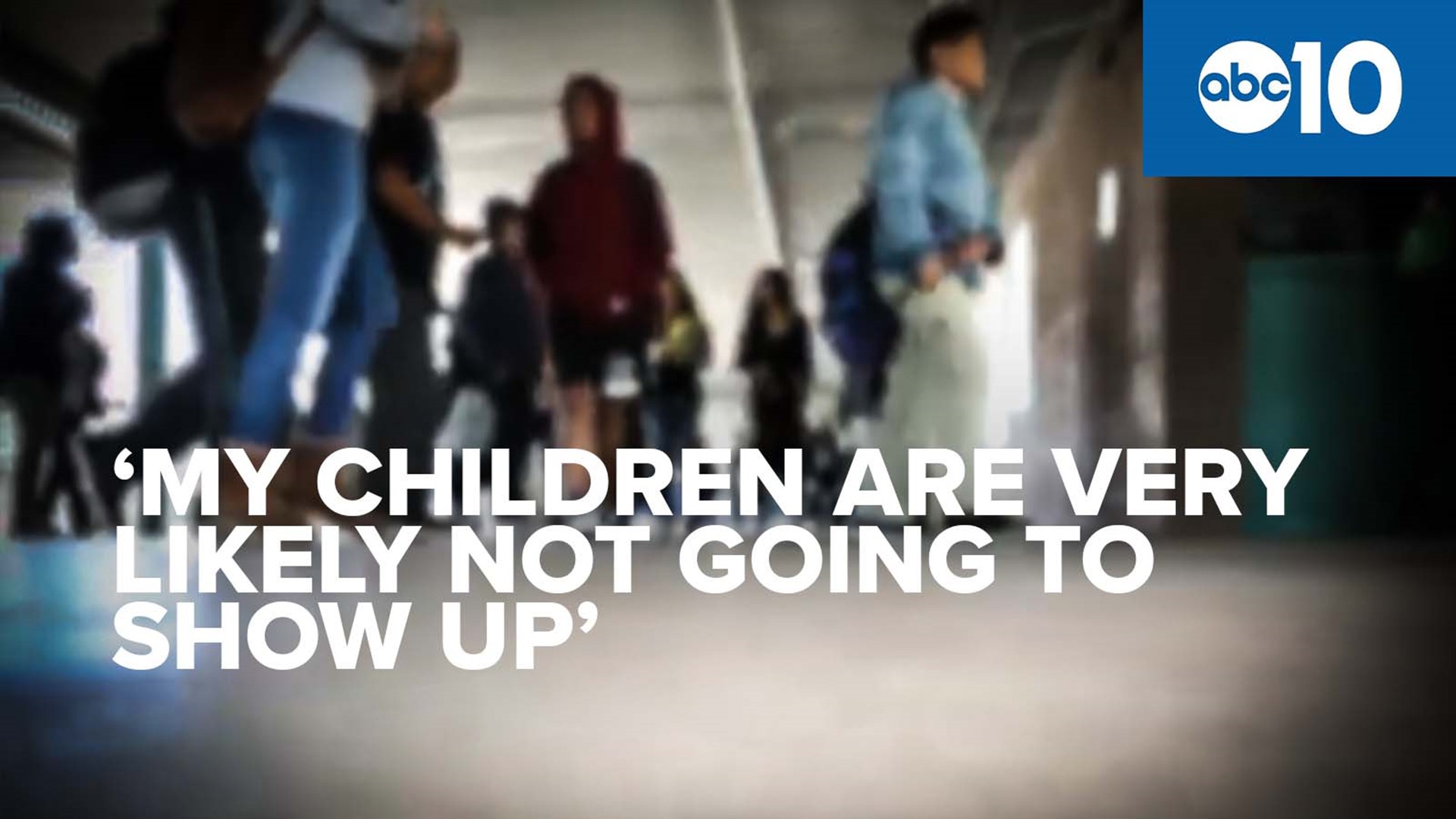SACRAMENTO, Calif. — "What is the hold up?" That’s likely the question more than 40,000 students and their families are asking as the Sacramento City Unified School District (SCUSD) and the Sacramento City Teachers Association (SCTA) negotiate over when and how the school year will end.
Following an eight-day strike by the SCTA and SEIU spanning late March into early April, SCUSD is on track to fall short of providing the minimum amount of instructional time required by state law.
SCUSD could face some $47 million in penalties from the state if they fail to meet that threshold, SCUSD Superintendent Jorge Aguilar told ABC10.
Both the district and the teachers association agree they want to solve this by adding a week of school to the existing calendar, which would extend classes through June 24.
Despite agreeing on that, disagreements over some of the details are holding up the negotiations, Aguilar said.
“Our families deserve to know whether or not our school calendar is going to be extended or not, and I hope that that will be resolved by the end of this week at the latest,” he said.
Between April 20 and May 4, SCUSD has proposed or counter-proposed three different versions of a memorandum of understanding between itself and the SCTA to extend the school year by a week and two days (including Thurs., June 16 and Fri., June 17). SCTA has responded each time – and now awaits the district’s latest reply.
SCTA president David Fisher told ABC10 he thinks the district is taking too long to respond to the union’s counter-proposals. The SCTA provided the most recent one on Wednesday, and as of Monday the district had not yet responded, although they did publish this update on negotiations Friday.
“We don't think that we're that far apart. We don't know what's taking them that long to come back to the table and just get this done,” Fisher said.
Asked what he’d say to parents who are frustrated that this process is taking so long – as summer plans hang in the mix – Fisher said, “I'm a parent myself and an employee in the district, so we have many of our members - who are teachers - who are parents within the district and have their own plans, so we are equally frustrated.”
Asked about Fisher’s concerns that the district isn’t replying in a timely manner, Aguilar said there are a lot of moving parts. For example, he said the district has consulted with CalSTRS – the state’s retirement system for teachers – four times in the past week or so since reduced instructional time could have an impact on teachers’ service credit.
"This is a pretty unprecedented, very complicated, very detailed issue that needs to be addressed,” he said.
In addition, he said the district is working to ensure there are enough teachers in that added week to teach the students who show up.
“People tell me all the time, ‘Well, we don't know if students are going to show up. Many of our families won't send their students to school for that last week.’ The reality is, we don't know,” Aguilar said. “And we do believe that we owe it to all of our families that may be in a different situation and may send their children to recover some of that quality instructional time.”
He said adequate staffing is key to a safe learning environment, “that we have the greatest level of certainty that we will not be in a situation where we have far too many of our staff members who are taking personal necessity time away from our school system - and then we're finding ourselves in that same staffing crisis that led to some of the challenges that we have faced, including this eight-day strike that we had to endure.”
The SCTA has proposed that the district “survey parents and legal guardians to determine projected student attendance by grade level and school” and staff the final week accordingly, letting teachers take time off as long as they let their administrator know by May 20. That is their latest counter to the district’s proposal that “no more that 20% of the certificated staff at any school site may be granted approved leaves of absence” on the additional instruction days: June 16-17 and June 20-24.
The two parties also disagree on who should bear responsibility if there’s an issue with teacher pay and/or pension amid all of this.
Nancy Knowdell has two kids in the Sacramento City Unified School District.
“We’re in-fighting. Parents just want all of this to be done,” Knowdell said. “They want function, not dysfunction.”
She said the extra week feels like a punishment for students and teachers, many of whom have already made summer plans.
“As a parent, my children are very likely not going to show up (for the added week). We have signed up for camps, we have signed up for other things, and to be honest, they're exhausted from the last few weeks,” she said, explaining that despite the eight days without school during the strike, students have still had to prepare for state testing happening this week. “I think the best possible scenario is that the district just try to recognize that people had made plans based on the calendar they published at the beginning of the year.”
She said she thinks the district should have foreseen this issue and dealt with it last month while resolving the strike with the teachers union.
WATCH ALSO:



















